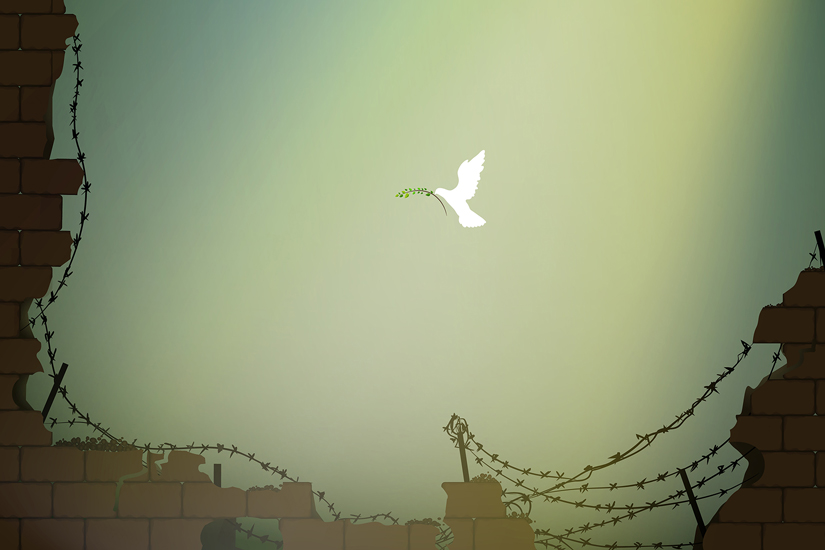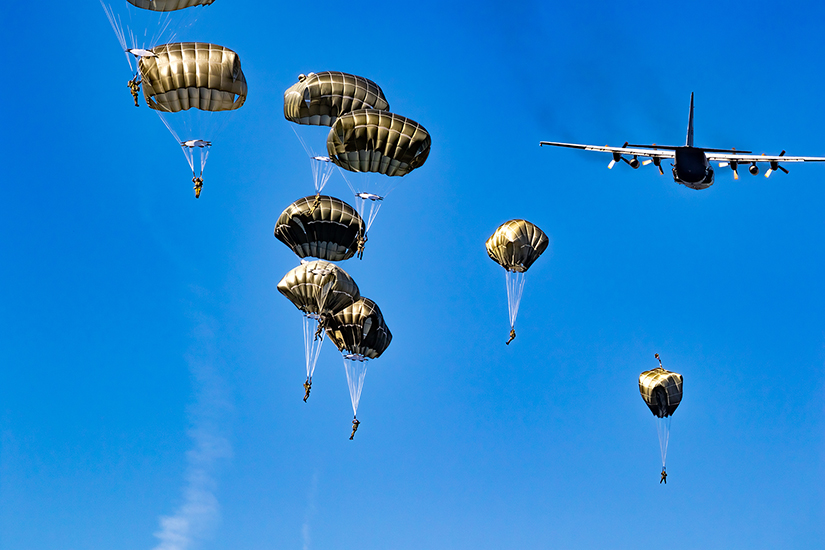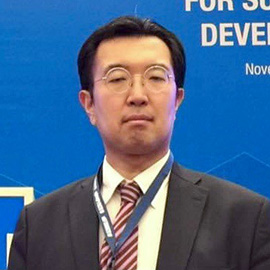Focus on the words and actions of the leaders of the Central Asian countries
The Shanghai Cooperation Organisation (SCO) summit was held in Samarkand, Uzbekistan in September 2022, and following that the Commonwealth of Independent States (CIS) Heads of State Council Meeting was held in Astana, Kazakhstan in October. President Vladimir Putin of Russia participated in both. In the global situation of the continuing COVID-19 pandemic and Ukraine War, he chose Central Asia as an exceptional destination to visit.
Putin also visited Tajikistan and Turkmenistan in June. At a time when Russia’s international isolation is deepening, Putin regards Central Asia as a region where he can exceptionally step on “friendly soil” [1]. Actually, as the author has pointed out in an earlier paper [2], Central Asia has strong ties with Russia in a variety of areas including the economy and military.
Despite these ties, it has been pointed out that recently the Central Asia region is undergoing “separation from Russia.” Immediately after the war started, President Kassym-Jomart Tokayev of Kazakhstan stated to Putin “to his face” that he would not recognize the “independence declaration” of the two provinces in eastern Ukraine [3]. The statement by President Emomali Rahmon of Tajikistan at the Astana meeting, mentioned at the start of this paper, which seemed to “reprove” Putin [4] was especially reported in the Japanese media because Tajikistan is a Central Asian country with a particularly high degree of dependence on Russia [5], and the statement was interpreted as meaning that perhaps Russia’s position as the “leading power” in the region was being shaken.
However, taking into account the events leading up to and the background of this statement, this author would like to present a view slightly different from a simplistic view of “separation from Russia” regarding the recent developments. This paper will firstly give a commentary regarding the aforementioned statement by Rahmon and clarify the background to the statement taking into account the recent trends in the region. After that, this paper will attempt a discussion of Putin’s “view of the alliance” by indicating the nature of the relations between Central Asia and Russia based on the series of recent developments.

The content of and background to the statement by Rahmon: dissatisfaction with the attitude of Putin with respect to the border dispute?
Tajikistan’s media outlet ASIA-Plus has reported the content of Rahmon’s statement [6]. The key points are presented in bullet point format below.
- At the time of the collapse of the Soviet Union, no consideration was given to the traditions and customs of the small ethnic groups and small republics, and there was no support for their development either.
- (Author’s note: Putin) stated that there were 2 million migrant workers from Tajikistan in Russia, but those people are also travelling to Russia for the purposes of overseas study and medical treatment, etc.
- (Author’s note: although no specific setting was mentioned) diplomatic negotiations have been implemented at the vice-ministerial level, not the ministerial level.
- We want to be respected.
- We do not want you to adopt policies with respect to Central Asia which have the nature of being with respect to “the former Soviet Union.” Each country has its own issues, traditions, and customs (author’s note: this can be surmised to have the nuance of “don’t treat all of the Central Asian countries the same”) [7].
From the above content, we can infer that Rahmon is emphasizing the nuance that “respect should be shown even to small countries,” and this is how it was reported in the Japanese media as well. However, it is necessary to grasp the background to this statement in order to understand its true intent.
One month before this Heads of State Council Meeting, in September, a military clash occurred between Tajikistan and its neighbor Kyrgyz Republic. The clash occurred in the border areas of the Batken Region in Kyrgyz Republic where large sections of the border are not demarcated and there are many exclaves [8]. Clashes and armed conflicts have frequently occurred between the citizens of the two countries and between their border guards since around the time when the Soviet Union collapsed. In the conflict in September, dozens of people were killed in both Tajikistan and Kyrgyz Republic, and Tajikistan mobilized artillery and armored vehicles to temporarily occupy villages on the Kyrgyz Republic side of the border. A large-scale conflict occurred in April last year as well, and on that occasion the media funded by the West indicated that Rahmon, who has been president since 1994, had attempted to play up external threats and use them to tighten domestic controls, in order to strengthen the legitimacy of his own administration [9]. In the conflict in September this year, immediately after a ceasefire agreement was concluded, shooting broke out again, so it was clear that it was already difficult for the countries involved to resolve this conflict by themselves.

At the political event in Astana discussed at the beginning of this paper, tripartite talks aimed at resolving the border dispute were separately held by Putin, Rahmon and President Sadyr Japarov of Kyrgyz Republic. These talks were commenced in a strange atmosphere with no handshakes or greetings between the leaders. The content of the talks was not made public, but it apparently did not satisfy the leaders of the countries involved in the conflict. Putin proposed “the continuation of consultations at an expert level” [10], but the author is forced to conclude that this was a half-hearted proposal.
The author has stated previously that Tajikistan is highly dependent on Russia both in terms of security and the economy [11]. It has been reported that when a CIS Informal Heads of State Council Meeting was held in Saint Petersburg, Russia on October 7, President Putin’s birthday, Rahmon piled up melons, a local specialty of Central Asia, in the venue as a “present” for Putin [12]. Note that President Japarov of Kyrgyz Republic was reportedly absent from this informal meeting to avoid sharing a table with Rahmon, whose birthday is two days before Putin’s [13]. Furthermore, at the beginning of this paper, the author described the Central Asia region as “friendly soil” for Putin, and Kyrgyz Republic, like Tajikistan, is highly dependent on Russia and has a Russian military base on its territory [14], but despite this it is the only country in the Central Asia region which Putin has not set foot in since the start of the Ukraine War, either for an official visit or a working visit [15]. There is a sense that the current Japarov administration, which was inaugurated in the political upheaval caused by the grassroots movement in October 2020, is being looked down on by Putin because of the background that it was born from a transfer of power due to a grassroots movement and perhaps because of anxiety regarding the country’s governance. It can be concluded that Rahmon took the step of exercising force because his similar feeling of contempt lowered the hurdle to the exercise of force, and perhaps that is precisely why the aforementioned strong statements came out with respect to the negative attitude of Putin at Astana.
Looking at this in greater depth, we can conclude that the series of recent developments highlighted the actual state of relations between the small countries and the big country which is that rather than “separation from Russia,” on the contrary, “even if they want to separate they cannot separate.” Specifically, despite the fact that Russia is necessary for mediation of the conflict from the perspectives of Kyrgyz Republic and Tajikistan, they are being treated lightly by Russia; however, they still want Russia to “take responsibility” and be involved as the major power in the region. The fact that Kyrgyz Republic asked for the dispatch of the Collective Security Treaty Organisation (CSTO) peacekeeping force after the Heads of State Council Meeting in Astana also backs up this view.
Based on the above background and circumstances, it seems that using the Rahmon statement to simply reach the conclusion that “separation from Russia is proceeding (as the direction of events after the Ukraine War)” is somewhat beside the point.
Putin’s contrasting “view of the alliance:” from a perspective that differs from a simplistic view of “separation from Russia”
Based on the series of recent developments, a slightly broader context, namely the different perspectives of how Russia regards the former Soviet Union region and clarification of Putin’s “view of the alliance,” comes to the surface.
The alliance which is easy for the West to imagine is probably the North Atlantic Treaty Organization (NATO). This has a war participation clause which states that if an allied state is attacked, the other allied states will participate in the counterattack, and this point is the same in the Russia-led CSTO [16].
However, looking at external military involvement by Russia to date, it seems that there is a gradation in the degree of that involvement within the sphere of the alliance. When large-scale antigovernment riots occurred in Kazakhstan in January 2022, in spite of the fact that at that time the Ukraine crisis was becoming more serious and that he was concentrating military power on the European front, Putin dispatched to Kazakhstan a CSTO peacekeeping force with several thousand soldiers from among the Russian military’s most elite airborne units at its core to support the suppression of the riots [17]. At this time the logic for the intervention was comprised of the claim that there were terrorists behind the riots and that “the stability of the member states is threatened,” but this was clearly unreasonable. It was obvious that the priority was given to the stability of Kazakhstan, a resources-rich country located between China and Russia which has had a presence since the era of the Soviet Union [18].

For example, if we consider the case of NATO, it is understood as a matter of course that no matter how small the invaded member state is, the United States and the other member states will provide military power and intervene [19]. Comparing with this, we can conclude that the “view of the alliance” of Europe and the United States, or the West, differs from Putin’s, which assigns different degrees of importance to allied states. We can perhaps conclude that Putin’s understanding and perception of the international community, which differs from “The West’s” is reflected in that kind of “view of the alliance” held by Putin.
There is a possibility that the series of recent developments from the CSTO intervention in the Kazakhstan riots to Putin displaying a negative attitude at the Heads of State Council Meeting in Astana has strengthened distrust of Russia among the small countries of the Central Asia region. The statement by Rahmon with the nuance that “respect should be given even to small countries” which the author commented on above can also be taken as a criticism of that kind of “view of the alliance” by Putin. Perhaps we can interpret the “incident” of this Rahmon statement three-dimensionally by grasping its background, specifically, “the border dispute which occurred at about the time of the Heads of State Council Meeting in Astana” and “Putin’s ‘view of the alliance’ which existed before that and was revealed from the time of disturbance in Kazakhstan to the present day.”
The strengthening centrifugal forces which nonetheless exist with respect to Russia in the region, and the involvement of Japan
Below, the author discusses the trends in the Central Asian countries and the involvement of external actors, while including some parenthetical content.
It is a fact that the Ukraine War has strengthened the centrifugal forces with respect to Russia in Central Asia to some extent. For example, from August 10 to August 20, 2022 Tajikistan and five other countries and the United States Central Command held a military exercise called Regional Cooperation 2022 in Tajikistan [20]. With this exercise in mind, Nikolai Patrushev, Secretary of the Security Council of Russia, made a comment to the effect that the United States conducted the military exercise in question in order to gain full knowledge about a potential region for military activities [21]. In response to this, Nasrullo Mahmudzoda, Secretary of the Security Council of Tajikistan, commented that “nothing has happened which threatens the relations between Tajikistan and Russia” [22], but it is highly meaningful that this exercise was carried out at this time. Furthermore, Kyrgyz Republic is seeing moves toward advancement of the “China-Kyrgyz Republic-Uzbekistan” international railroad project, which it was doubted for many years would be realized, and there are many local media reports concerning this project, saying “the geopolitical taboo with respect to the Kremlin has been broken” and “the Iranian ambassador proposed a connection with Chabahar Port in southern Iran,” so expectations are growing for the diversification of external relations. Nonetheless, it is difficult to think that relations with Russia will cede the most important position in the foreign policy of each of the countries in the region to any other country overnight. Presumably each of the countries in the region will continue to focus their efforts on balancing.
Finally, the author would like to discuss the involvement of the Western countries, including Japan, taking into account the current situation.
From April to May 2022 Minister for Foreign Affairs Yoshimasa Hayashi went on a round of visits to Uzbekistan, Kazakhstan, and Mongolia. In Kazakhstan and Uzbekistan Foreign Minister Hayashi communicated his concerns about the situation in Afghanistan and his criticisms of Russia pertaining to the Ukraine situation [23].
A tendency was seen, primarily in the media and think tanks, to focus interest on what kinds of trends the former Soviet Union countries in Central Asia would show as a consequence of the Ukraine War. However, perhaps partly due to the COVID-19 pandemic, as of October 2022 there have actually been few mutual visits of high-ranking officials with the West, to the extent that the visit of US Under Secretary of Commerce for International Trade Marisa Lago to Uzbekistan was reported to be “the first visit of a high-ranked official from the United States since the COVID-19 pandemic” [24]. In this kind of situation, it is safe to conclude that being the first among the major Western countries to send a foreign minister was the effect from the accumulation of Japan’s diplomatic efforts for Central Asia, in particular through “Central Asia plus Japan” [25].
However, there is still no vision regarding what Japan should do specifically after showing its presence. As the author indicated in an earlier paper, Japan has played a pioneering role in terms of establishing the diplomatic framework called “Central Asia plus one” which has been imitated by the United States, Europe, Russia, and China, but the coming to fruition of specific outcomes cannot be seen. Especially now, when the centrifugal forces with respect to Russia are continuing to strengthen in the region and the demand for the diversification of external relations is growing locally, should we not consider giving further shape to cooperation with Central Asia based on a precise grasp of the situation?
(2022/12/13)
Notes
- 1 The statement by Putin when visiting Tajikistan. “Mr. Putin Goes on His First Overseas Trip since the Invasion … Visits Tajikistan and Says ‘I Am Pleased to be Stepping on Friendly Soil’”, Yomiuri Shimbun, June 29, 2022.
- 2 Ryota Saito, “The Presence of China and Russia in Central Asia: In the Context of Competition between the Two Great Powers, How Should Japan and the West Get Involved?” The Sasakawa Peace Foundation International Information Network Analysis (IINA), July 21, 2021.
- 3 “President of Kazakhstan Does Not Recognize the Pro-Russia Factions in Eastern Ukraine”, Kyodo News, June 18, 2022.
- 4 To be precise, this statement was made in the first summit meeting of Central Asia Plus Russia held within the framework of the CIS Heads of State Council Meeting.
- 5 “Tajikistan President’s Unprecedented Criticism of Russia ‘Stop Treating Us like a Vassal State’”, Sankei Shimbun, October 15, 2022.
- 6 As of October 18, 2022, the content in question is not included in the full text of the speech by President Rahmon posted on the website of the President of Tajikistan (http://president.tj/ru). However, a statement with the content reported by ASIA-Plus is in circulation in a video.
- 7 “Эмомали Рахмон – Путину: Прошу не относиться к странам Центральной Азии, как к бышему СССР”, ASIA-Plus, October 14, 2022.
- 8 The following article provides details about the situation in this region: Naoki Nihei, “Central Asia: The Current Situation and Issues in the Fergana Valley — With the Focus on the Perspective of Kyrgyz Republic”, The Povertist, October 1, 2019.
- 9 “Deadly Border Conflict Promises to Change How Kyrgyz Republic, Tajiks See One Another And Their Leaders”, Radio Free Europe Radio Liberty, May 4, 2021.
- 10 “Таджикистан и Кыргызстан снова договорились активизировать делимитации и демаркацию госграниц”, ASIA-Plus, October 13, 2022. Note that in Russian an “expert (эксперт)” is often positioned as a low rank; for example, this term is used for titles at the level of the person in charge in government ministries and agencies. There is a possibility that this fact also worsened Rahmon’s impression of Putin’s proposal.
- 11 Refer to Note 2.
- 12 “A Tractor, a Mountain of Melons … Birthday Presents for President Putin”, BBC NEWS JAPAN, October 8, 2022.
- 13 “Садыр Жапаров не примет участие в неформальное саммите СНГ в Санкт-Петербурге, - источники”, Akipress, October 6, 2022 (member article).
- 14 Kant Air Base. Note that the Russian military has the “201st Military Base” unit with 6,000 personnel (claimed) stationed in Tajikistan as well.
- 15 Note that Turkmenistan, which Putin visited along with Tajikistan in June, has declared permanent neutrality (in December 1995, that status was recognized in the United Nations General Assembly), and the country is not participating in regional frameworks led by Russia, such as the CSTO and the Eurasian Economic Union, either. Based on this fact as well, we can deduce that Kyrgyz Republic has been half “neglected” in the current situation.
- 16 Article 5 of the treaty in the case of NATO and Article 4 of the treaty in the case of the CSTO.
- 17 However, reports say that at this time it was the authorities of Kazakhstan who were directly involved in the suppression and that the CSTO peacekeeping force provided security for important facilities such as airports.
- 18 Within the sphere of the CSTO member states, Russia was also asked by the countries involved to intervene in the 2010 ethnic conflict in southern Kyrgyz Republic and the 2020 military clash in Nagorno-Karabakh in the Caucasus, but Putin decided not to intervene in both cases. Ryota Saito, “Incident in Kazakhstan in January 2022: From perspective of International Relations”, Japan External Trade Organization (JETRO) Institute of Developing Economies, Eyes Looking at the World, April 5, 2022.
- 19 Regarding the view of NATO and other alliances from the perspective of small and medium-sized countries and the trends within the frameworks of the alliances, refer to Issuance of “Report — The Balance Sheet of the US Allies: Comparative Study between Asia and Europe Series”, The Sasakawa Peace Foundation, September 8, 2021.
- 20 “В Таджикистане стартовали учения, организованные Центральным командованием США”, ASIA-Plus, August 11, 2022.
- 21 “Патрушев предупредил коллег ШОС о рисках совнестных военных учений с США”, ASIA-Plus, August 23, 2022.
- 22 “Душанбе отреагировал на заявление секретаря Совбеза России”, ASIA-Plus, August 24, 2022.
- 23 Ministry of Foreign Affairs of Japan, Foreign Minister Hayashi visits Kazakhstan, Uzbekistan, and Mongolia (April 28-May 2, 2022), May 2, 2022.
- 24 “Представители Минторговли США посетят Узбекистан”, gazeta.uz, October 11, 2022.
- 25 This is a diplomatic framework of the Japanese government with respect to Central Asia launched by Ms. Yoriko Kawaguchi, then-Minister for Foreign Affairs, in 2004. For the details refer to the Ministry of Foreign Affairs of Japan website.
- 26 Refer to Note 2.

